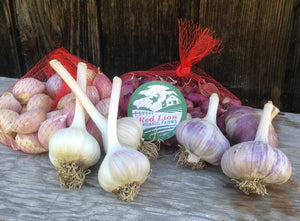Garlic can be prepared in a number of ways for freezing.
1. Chop garlic, wrap it tightly in a plastic freezer bag or in plastic wrap, and freeze. To use, grate or break off the amount needed.
2. Place garlic bulbs or cloves (peeled or unpeeled) in a freezer bag or container and freeze; remove cloves as needed.
3. Peel the cloves, purée them with oil in a blender or food processor using 2 parts oil to 1 part garlic, and pack the mixture into an airtight container. (The puree will stay soft enough in the freezer to scrape out portions to use in sautéing.)
Freeze this mixture immediately—do not hold or store it at room temperature. The combination of the low-acid garlic, the exclusion of air (by mixing with oil), and room-temperature storage can support the growth of Clostridium botulinum - see the warning below:
Botulism warning:
Garlic is a low acid vegetable. The PH or a garlic clove usually ranges between 5.3 to 6.3.
As with all low acid vegetables, garlic will support the growth and subsequent toxin production of the bacterium Clostridium botulinum under the right conditions. These conditions include home canning and improper preparation and storage or fresh garlic-in-oil mixtures. Moisture, room temperature, lack of oxigen, and the low acid nature of garlic all favor the growth of Clostridium botulinum. When this bacterium grows, it produces a very potent toxin, that causes the illness botulism. It is important to follow the directions for storingarlic carefully to make sure your preserved garlic is safe to eat.

